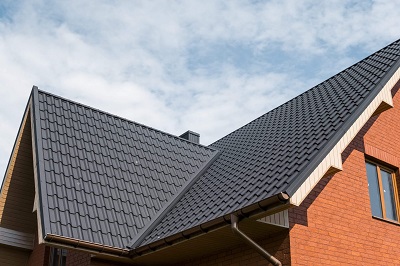Energy generation and storage companies seek high performance materials capable of operating in complex and challenging environments. Advanced ceramics, also known as technical ceramics, showcase certain exceptional capabilities which drive evolution of the energy industry. Technical ceramics such as thermoceramics, piezoceramics, magnetoceramics, nanoceramics, ceramic composites and bioceramics challenge metals, polymers, glass and even nanocomposites in several aspects.
Thanks to a wide range of properties, technical ceramics gain prominence over traditional metals and polymers and these properties cannot be easily replicated. As for example Piezoceramics convert mechanical parameters, such as pressure and acceleration into electrical parameters or, conversely, which are deemed extremely important in pertinent applications such as energy harvesting devices. On surfaces exposed to high mechanical, chemical and thermal stresses, wherein certain metals showcase lack of stress resistance, technical ceramics have been able to achieve prolonged resistance to heat, moisture and chemicals without compromising durability or being corroded. Technical ceramics have also been used for high temperature sustenance for generating energy in power plant engines and turbines or in systems for photovoltaics, solar thermal energy conversion, and wind and water power. Technical ceramics are capable of matching both cost and performance requirements when compared to graphene and other 2D materials.
Solid oxide fuel cells (SOFCs) exhibit potential to become a widely adopted clean energy solution. SOFCs aid in the electrochemical conversion to produce electricity by direct oxidation of a fuel. SOFC s also operate at a very high temperatures, nearly 800ºC to 1,000°C or even higher. Though metal-supported SOFC exhibits superior mechanical robustness, high temperature operation is still compromised. Technical ceramics are poised to become a material of choice to produce electrolyte supported (ESC) and anode supported (ASC) cells of SOFCs. SOFC thin films composed of ceramic powders are also prepared by slurry or suspension depositions. Technical ceramics would aid SOFCs to become an alternative for relatively clean distributed power generation in the future.
Apart from SOFCs, technical ceramics fuel developments in other aspects of the energy industry. For example ceramic-metals can replace metal alloys in solar power plants’ heat exchangers. These materials can increase the performance of heat exchangers as compared to traditionally used nickel alloy-based counterparts. Additionally replacing alloy based components with technical ceramics also reduce downtime due to material failure, while increasing efficiency and process operating temperatures.
Thermoelectric ceramics such as polymer thermoelectric and organic-inorganic hybrid thermoelectric can produce much more thermal efficiency of solar cells. Thermoelectric generators made with technical ceramics, unlike silicon and polymers can be easily installed into solar panels. As end users in the energy industry demand components made from physically stable, elastic, chemically inert and mechanically sturdy materials, technical ceramics establish the material usage into a very specific modules of the energy industry such as thin film photovoltaic deposition. As opposed to silicon-based and non-silicon based thin film solar cells, the production processes of such unique ceramic materials can be easily ramped up without compromising energy efficiency. Technical ceramics manufacturers have already investigated the new aspects of technical ceramics by prototyping a thin film photovoltaic structure made with Pyrolytic boron nitride (pBN).

Exploring new applications
Technical ceramics are being explored into brand new applications; the materials are also designed into next-generation products, translated into a customer oriented form and also modified according to individual properties. To feature the use of technical ceramics in high temperature superconductors, the mechanical properties such as its brittle nature is being improvised. To design and synthesize robust organic solar cells and membranes, self-healing metalloceramics with excellent energy storing capabilities are being developed. In a nutshell, the research and development of new technical ceramics propel significant developments in the energy storage and harvesting arenas.
To conclude, challenges in energy generation, storage, conversion, harvesting and distribution can be single handedly tackled with the use of technical ceramics. Technical ceramics is being deemed instrumental to drive revolutionary technology breakthroughs in the energy industry. Additionally due to superior range of performance attributes and intrinsic capabilities to prolong product lifespan, technical ceramics are replacing conventional plastic, glass, metals and even refractory materials. The futuristic approach towards growing penetration of technical ceramics into the energy industry would be by adding new materials into this portfolio. Brand new working principles of existing products as for example: harnessing solar power at night and incorporation into thermionic energy converters would extend the emphasis of technical ceramics into new energy sub-segments. The technical challenges which have been highlighted by end users in the energy industry now showcase the feasibility to be addressed by these unique counterparts of traditional ceramics. As challenges of high temperature sustenance and mechanical integrity are resolved, globally end users would be interested to seek collaborations with technology developers to trial and test the material in their respective operating space.
Manufacturing enablers such as 3D printing and plasma etching would tailor production to obtain multiplex shapes which would further attract energy companies and OEMs to capitalize from these materials. However intensive research still needs to be conducted to improvise properties such as thermal shock, shear and tensile strengths. Research will also be focused at maximizing the benefits of technical ceramics into new applications such as designing highly efficient and sustainable next generation solar cells of the future. Technical ceramics can replace metals, plastics and other traditional materials in the energy sector and help address industry needs for effective and high performance energy generation and storage solutions.
About the author:
Sanchari Chatterjee is an Industry Analyst - Chemicals & Advanced Materials, at Frost & Sullivan's TechVision. For more information on Frost & Sullivan and its reports, visit: https://ww2.frost.com/














